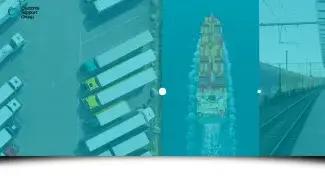Discover how you can unlock these benefits in this article.
Expanding what customs is
You know that customs clearance includes an export and an import declaration, with import duty and VAT paid during the latter.
But, these are only the core, in-shipment parts of the customs function. There are also procurement, procedural, and overhead implications which should be considered.
The role of customs in procurement
The best time to explore your options for customs is before the goods are shipped, during the procurement phase. Once your goods are shipped, you’ve made decisions on your goods classification, preferential origin, and Incoterm which cannot be amended.
Therefore, any opportunity to save money with a different supplier or product has been lost.
Understanding the “real” cost of goods
You know that the cost of goods includes the supplier’s price, freight to your door, and import duty, but do you consider all three when comparing suppliers – or just the first two?
By working to obtain a correct goods classification, you can explore whether or not there is an opportunity to apply a trade deal to your shipment.
If you are able to apply a preferential rate or a special procedure, then your duty cost is no longer calculated in direct relation to the price of your goods and the freight to the border – it becomes another variable that must be calculated and considered within the total price.
You must consider the total price of getting your goods to you and whether there are alternative routes to get those goods, not only the face value of the cost and freight.
Exploring a different stage of processing
Another option which is lost once your order is shipped is the whether to procure a component at a current or a different stage of processing. Although you could be adding another step in your supply chain, it could make a huge difference financially.
To give you a simple example, consider that you sell steel nails. You could decide to import steel nails as a finished product, or you could import steel wire and process the nails yourself. Although the end product at the point of sale is the same, the commodity codes, suppliers, and end price per unit will be different for each product.
What’s more, you could unlock a duty waiver for the steel wire because of inward processing (more on that below).
Depending on your classification, there may also be a sustainable supply chain initiative applicable which adds another layer for your consideration. For example, your Carbon Border Adjustment Mechanism (CBAM) costs could be higher per nail when you buy them as a finished product as opposed to buying steel wire.
(Related: classification and CBAM)
If you look at the cost of the processing alongside the price of the wire, the freight, and the import duty, consider how that compares to the cost of importing nails. There will be an initial outlay, employment, and maintenance, but you could still find that there are savings to be made over the long term. Additionally, in this scenario you could also consider how being able to adapt the nail sizes for orders at your premises, instead of origin, could give you a competitive advantage.
Reducing costs and enhancing performance during the customs process
Once your goods are shipped and you’ve committed to a classification, there are still ways you can improve your efficiency during the shipment.
Tax suspension
Using customs warehousing or a simplified clearance, you can temporarily suspend your duty and VAT payment until a later date. This removes the requirement for a tax payment at the border, which can speed up the release of your goods, and also protects your cashflow.
Many users of simplified clearances complete their clearance by putting their goods into bond. In this way, they use the reduced dataset to remove paperwork obstructions at the border, and then further suspend the payment of import duty and VAT until the goods are required.
Inward processing
When you are consuming goods and creating a different product, you can sometimes apply for inward processing relief (IPR). This allows you to write off some of the material that is used up during the process and claim the duty back on it.
Remember the example above of turning steel wire into nails? This is the kind of process that you could use inward processing relief on, where you only pay duty on the material which ends up becoming nails – the waste wire is calculated and the duty obligation is written off.
Furthermore, duty is only paid on inward processing goods which are sold into the domestic market.
If you imported the wire, processed the nails, and then reexported them, you may be able to waive your entire duty cost using IPR. You also do not need to reexport the whole shipment to claim IPR.
Imagine you consume 10% of the wire in the process and then sell 50% domestically – you could save 55% of your duty cost by using IPR on this shipment.
Note that there is a time limit on being able to claim IPR for exported goods, which is typically three months between import and reexport. Longer timeframes can be negotiated depending on the process(es) involved.
Waiving duty on reexported or reimported goods
You do not need to process goods into something else to claim a duty relief during export. If your goods are imported and then resold internationally, you can claim back the duty on goods which are reexported so long as the conditions are met.
This means that you do not have to permanently pay import duty on goods which are temporarily held in a forward stocking location, even if the premises you are using is not a customs warehouse.
Additionally, if you have taken goods out of the country, you may not have to pay import duty on them coming back into the country. Returning a temporary export or claiming outward processing relief (OPR) can reduce or remove your tax obligations when bringing your goods back into the country.
Customs overheads and risks are always present
Alongside the cost, freight, processing, and duty costs, your customs overheads also influence the real cost of your goods. Consultants, software, admin, permits – these all come into the equation.
These are often fixed costs, which means that you cannot always associate a favourable overhead to each shipment in times of low volume.
Additionally, there is the risk of additional costs for noncompliance or errors. Where you may consider a wrong digit in a declaration being the main risk, this is often a simple fix. You must also be aware of risks with preferential origin statements and other due diligence issues, and fulfilling compliance obligations pre- and post-clearance. These must also be factored into your operation.
Unlock Enhanced Efficiency and Cost Savings in Your Customs Operations
To save money and reduce your risk, you can introduce variable costs, automation, and the help of a trusted customs partner.
Customs Support Group provides solutions which make your customs function more cost-efficient and improve compliance. From CustomsTech to expert advice and variable staffing, we help you unlock the efficiency within your customs function so that you can save money, reduce risk, and be competitive within your market.
Get in touch today to discover how we can drive improvements in your operations with Customs Support Group.














